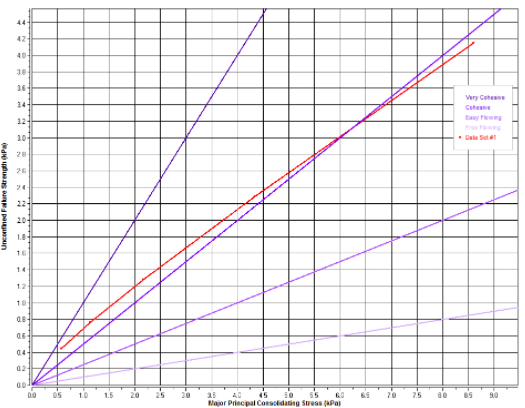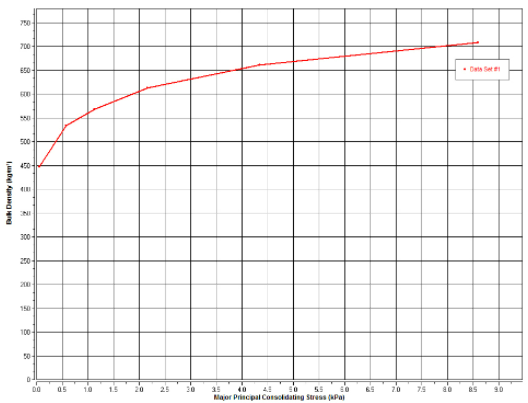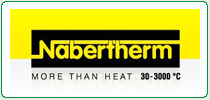USE
Determination of powder flow characteristics of brown gravy mix.
TEST EQUIPMENT
Instrument: Powder Flow Tester (PFT)
Trough: 230 cc, 6-inch diameter (Standard Volume)
Lid Type: Vane Lid, 33cc, 6-inch diameter
Type of Test: Flow Function Test
Temperature: Room Temperature (70-72°F)
Humidity: 48%
METHOD
A Brookfield Powder Flow Tester equipped with Powder Flow Pro software for automated instrument control and data acquisition was used to test brown gravy mix. The gravy mix was scooped into the trough, and the scraping tool was then used to evenly distribute the powder and form the sample. After recording the sample weight and entering it into the software, a standard Flow Function test was run. Time required for the test was 25 minutes.
PARAMETERS MEASURED
Flowability: Cohesive/Very Cohesive
Bulk Density: 447 kg/m3 (fill density) to 706 kg/m3
ANALYSIS
Hopper Shape: Conical
Critical Arching Dimension: 0.218 m
Rat-hole Diameter: 1.379 m
Figure 1 shows the flowability of the brown gravy mix at different levels of consolidating stress. These results show that the gravy mix is generally cohesive/very cohesive throughout the different levels of consolidating stress, meaning this product will be difficult to flow.
Note: The Flow Function data is indicated by the red line. The other lines are references (or “Standard Flow Indices”), which distinguish the different types of flow behavior, ranging from “non-flowing” along the y-axis to “free flowing” along the x-axis.
The axes are Unconfined Failure Strength (kPa) vs. Major Principle Consolidation Stress (kPa).

Figure 1: Brown Gravy Mix Flow Function Graph
Figure 2 is a table which reports arching dimension and rat-hole diameter based on a standard bin diameter of 2 meters and a bin height of 8 meters. The gravy mix requires a hopper opening of 0.218m to ensure that a cohesive arch (jam) will not form. The rat-hole diameter indicates that the hopper opening must be larger than 1.379 m to ensure a rat-hole does not form.
|
Data Set |
Arching Dimension |
Rat-hole |
|
# |
(m) |
(m) |
|
1 |
0.218 |
1.379 |
Figure 2: Brown Gravy Mix Arching Dimension and Rat-hole Diameter
Figure 3 shows the bulk density of the material at different levels of consolidating stress. This graph tells us that the gravy mix has a loose fill density of about 447 kg/m³ and rises to final bulk density of 706 kg/m³ at around 8.6 kPa of consolidating stress. In general, a free flowing powder will show very small changes in bulk density, while a cohesive or poor flowing powder will generally show a large increase in bulk density. This gravy mix shows a large increase in bulk density from initial fill to final bulk density which is a clear indicator that this powder is going to be difficult to flow.
The axes are Bulk Density (kg/m3) vs. Major Principle Consolidation Stress (kPa).

Figure 3: Brown Gravy Mix Density Graph
CONCLUSION
The brown gravy mix is a cohesive/very cohesive powder through all levels of consolidation stress. This means that the gravy mix will experience flowability issues if proper precautions are not taken. Possible problems include arching (when the powder forms a cohesive bridge over the outlet) and ratholing (when the powder flows out only from the center leaving the rest of the material static against the walls). Possible solutions include the introduction of flow aid at specified levels and equipment additions (such as a vibratory system).
>>Download a pdf of this application note.
Contact us : This email address is being protected from spambots. You need JavaScript enabled to view it.

















